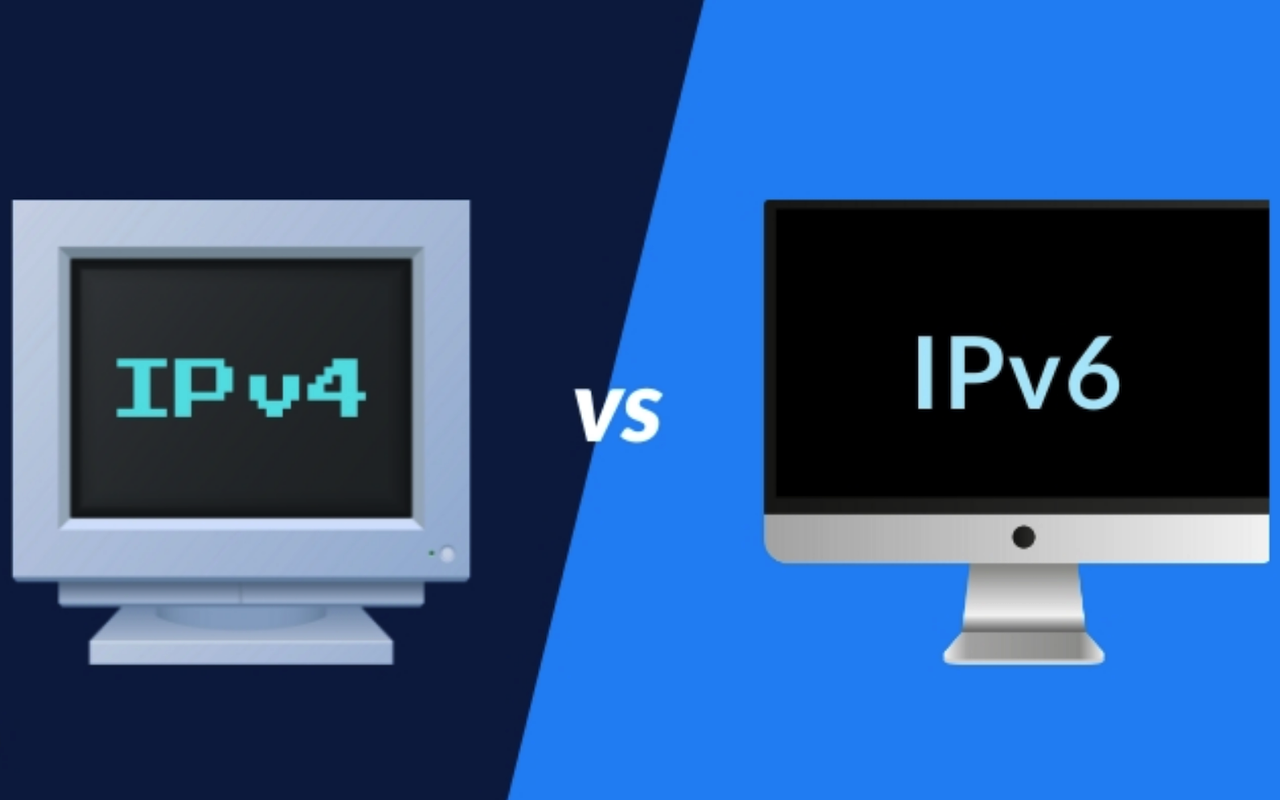
The internet is powered by IP addresses—unique identifiers that allow devices to communicate across networks. For decades, IPv4 (Internet Protocol version 4) has been the standard. But as the number of connected devices exploded, the world began transitioning to IPv6 (Internet Protocol version 6). While IPv6 adoption is growing, IPv4 remains vital for many businesses. In this article, we’ll explore the main differences between IPv4 and IPv6, their pros and cons, and why companies often need access to both.
What Is IPv4?
IPv4 was introduced in 1983 and uses a 32-bit addressing system, providing approximately 4.3 billion unique addresses. An IPv4 address is formatted as four decimal numbers separated by dots (e.g., 192.168.1.1).
IPv4’s simplicity and decades of infrastructure compatibility have made it the most widely used protocol in internet history. However, the explosive growth of the internet, smartphones, IoT devices, and cloud services led to an eventual shortage of available IPv4 addresses.
What Is IPv6?
IPv6, launched in 1999, uses a 128-bit addressing system, offering an astronomical 340 undecillion unique addresses, enough for every device on earth to have billions of unique identifiers. IPv6 addresses are represented as eight groups of hexadecimal numbers separated by colons (e.g., 2001:0db8:85a3:0000:0000:8a2e:0370:7334).
Beyond capacity, IPv6 offers several technical improvements:
- Simplified network configuration (auto-configuration capabilities)
- Better routing efficiency
- Improved security with IPsec support as standard
- No need for NAT (Network Address Translation) in most cases
IPv4 vs IPv6: Key Differences at a Glance
| Feature | IPv4 | IPv6 |
|---|---|---|
| Address Length | 32 bits (4 bytes) | 128 bits (16 bytes) |
| Address Format | Decimal, dot-separated | Hexadecimal, colon-separated |
| Number of Addresses | ~4.3 billion | ~340 undecillion |
| Security | Optional IPsec | IPsec mandatory |
| NAT Requirement | Commonly used | Not typically required |
| Deployment | Universally supported | Growing adoption, not universal |
Why IPv4 Is Still Important
Despite IPv6’s advantages, the transition has been gradual. Many networks, applications, and devices still rely heavily on IPv4. Full IPv6 adoption is complex because:
- Legacy hardware and software may not support IPv6
- ISPs and hosting providers often default to IPv4
- Many online services and clients are still IPv4-only
For businesses, this means IPv4 remains essential for compatibility, especially for reaching customers and partners still using older infrastructure.
The IPv4 Shortage and Leasing Solutions
Because IPv4 addresses are limited and in high demand, acquiring them can be expensive. That’s why many companies are turning to leasing instead of purchasing.
With IPV4 rental providers like ServerMania, businesses can access the IPv4 addresses they need without the high upfront cost of buying them. Leasing provides flexibility, allowing companies to scale address usage up or down based on project demands while ensuring full compatibility with existing IPv4-based systems.
Why IPv6 Alone Isn’t Enough, Yet
While IPv6 adoption is accelerating, businesses can’t rely on it exclusively for several reasons:
- Incomplete Global Adoption: Not all ISPs or countries support IPv6 fully.
- Customer Reach: Some audiences may only have IPv4 access.
- Application Compatibility: Older systems and tools may fail without IPv4 support.
As a result, most organizations implement dual-stack networking, running both IPv4 and IPv6 simultaneously to ensure full coverage and functionality.
The Future: Coexistence for Years to Come
The shift to IPv6 will continue, especially as IoT and cloud computing expand. However, IPv4’s role will remain critical for years, possibly decades, due to the global nature of internet infrastructure and the cost of a full transition. Businesses that want to stay connected to the widest possible audience should:
- Ensure their networks support both IPv4 and IPv6
- Lease IPv4 addresses when needed to maintain compatibility
- Prepare for IPv6 growth without abandoning IPv4 entirely
Final Thoughts
IPv4 and IPv6 are not mutually exclusive; they’re complementary in today’s internet ecosystem. IPv6 solves the address shortage and introduces technical improvements, but IPv4 remains the backbone of global connectivity.
With services like IPV4 leasing, businesses can ensure they have the IPv4 resources needed for seamless communication, while still preparing for an IPv6-driven future.
In short, the smart approach is not “IPv4 vs IPv6”; it’s “IPv4 and IPv6” working together to keep the internet running smoothly.




Comments (0)
No comment